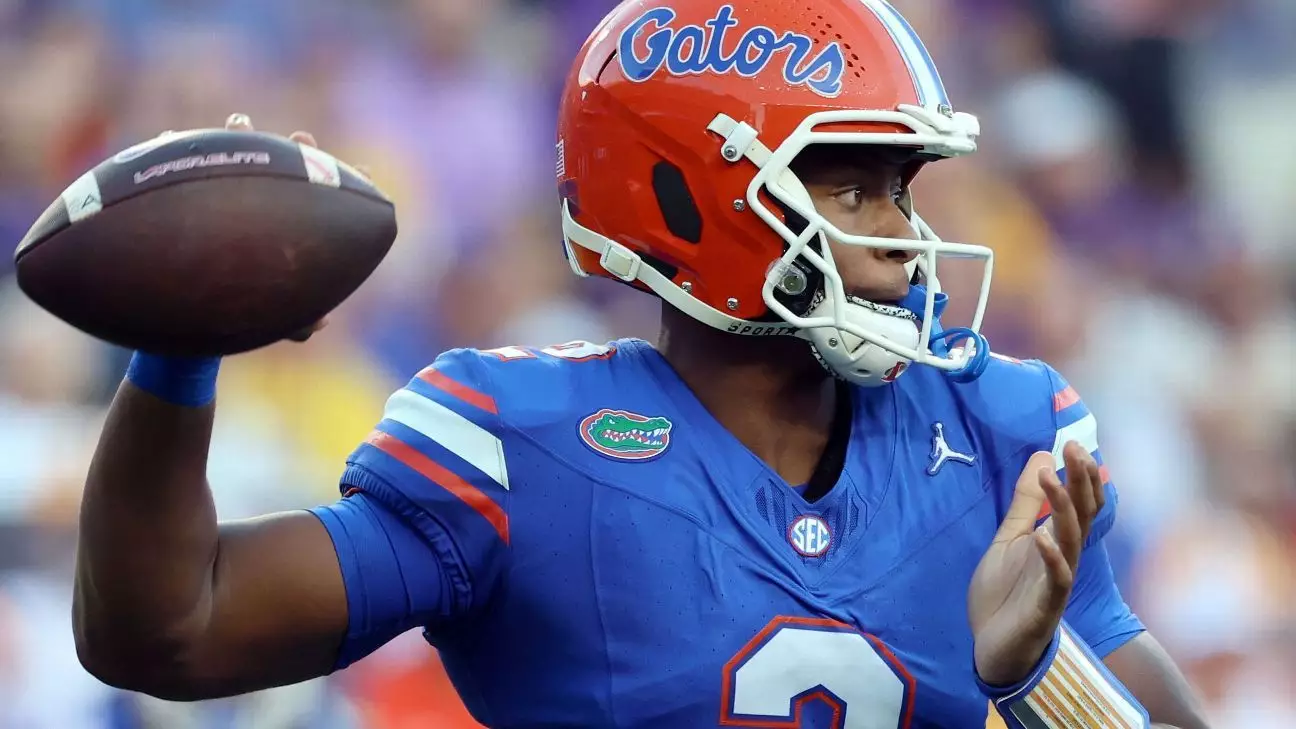In a thrilling encounter that showcased resilience and strategic finesse, the Florida Gators pulled off an impressive upset against the No. 21 ranked LSU Tigers, winning 27-16 in a game that has significant implications for both teams. This victory not only marked Florida’s first win over LSU since 2018, but it also propelled them closer to bowl eligibility, demonstrating the potential turnaround of a team that had been struggling in recent seasons.
The standout player of the match was undoubtedly DJ Lagway, who returned from a hamstring injury that sidelined him for crucial games. Lagway’s leadership on the field was palpable as he completed 13 of 26 passes for 226 yards, including a pivotal touchdown pass to Elijhah Badger. Lagway’s ability to command the offense, even without relying heavily on scrambling, highlighted his capability as a quarterback. His long completion that set up another touchdown illustrates his vision and execution, crucial attributes for any quarterback looking to lead his team to victory.
In a game where the offense shined, the Florida defense also played a crucial role. With an impressive seven sacks on LSU quarterback Garrett Nussmeier, Florida’s defensive unit managed to disrupt LSU’s game plan significantly. On top of this, their ability to create turnovers, highlighted by the chaotic sequence around Nussmeier’s fumble, demonstrates a defensive resurgence following a lackluster performance in the previous week. Coach Billy Napier praised the defense for their commitment to overcoming prior disappointments and taking ownership of their performance.
The turning point of the match can arguably be traced back to T.J. Searcy’s sack of Nussmeier in the latter stages of the third quarter. The subsequent sequence, where Nussmeier fumbled the ball, exemplifies how pivotal defensive plays can shift the momentum of a game. Florida’s ability to not only recover the fumble but also to capitalize on the subsequent offensive drive, capped by a 1-yard touchdown run from Ja’Kobi Jackson, encapsulated their tenacity and determination.
While it may have appeared that LSU dominated the first half, outpacing Florida in time of possession and total plays, the resilience of the Gators in the second half ultimately proved to be decisive. Nussmeier, despite throwing a touchdown and putting together a commendable 260-yard game, faltered under pressure, illustrating how critical defensive adjustments can change a game’s trajectory.
This game was not just a regular season matchup; it was a crucial rivalry between the Gators and Tigers that carries historical significance. Former Florida coach Steve Spurrier had encouraged fans to storm the field in celebration had Florida emerged victorious. While that did not transpire, the victory still reignited a sense of hope among the Gators’ faithful—a reminder that their team can rise to the occasion, especially in high-stakes games against ranked opponents.
With this win, Florida improved their record to 5-5 and 3-4 in the Southeastern Conference, bringing them within reach of bowl eligibility. The Gators had endured a lengthy drought against ranked teams, losing eight consecutive games in such scenarios prior to this match. For Coach Napier, this victory represents more than just a single game win; it symbolizes a potential turning point for the program as they seek to build momentum heading into the final weeks of the season.
Meanwhile, for LSU, this defeat raises concerns as they continue to grapple with consistency under Coach Brian Kelly. The loss marks three successive defeats for the Tigers, effectively extinguishing their streak of 10-win seasons that had been a hallmark of Kelly’s coaching tenure before arriving in Baton Rouge.
The Florida Gators’ triumph over LSU serves as a pivotal moment in their season. With DJ Lagway reinvigorating the offense and a defensive unit that has rediscovered its edge, Florida appears primed to make a strong push as the season progresses. This victory not only fosters renewed optimism among the players and fans but also sets a foundation for future performances as they aim to return to prominence in the competitive landscape of college football.


Leave a Reply